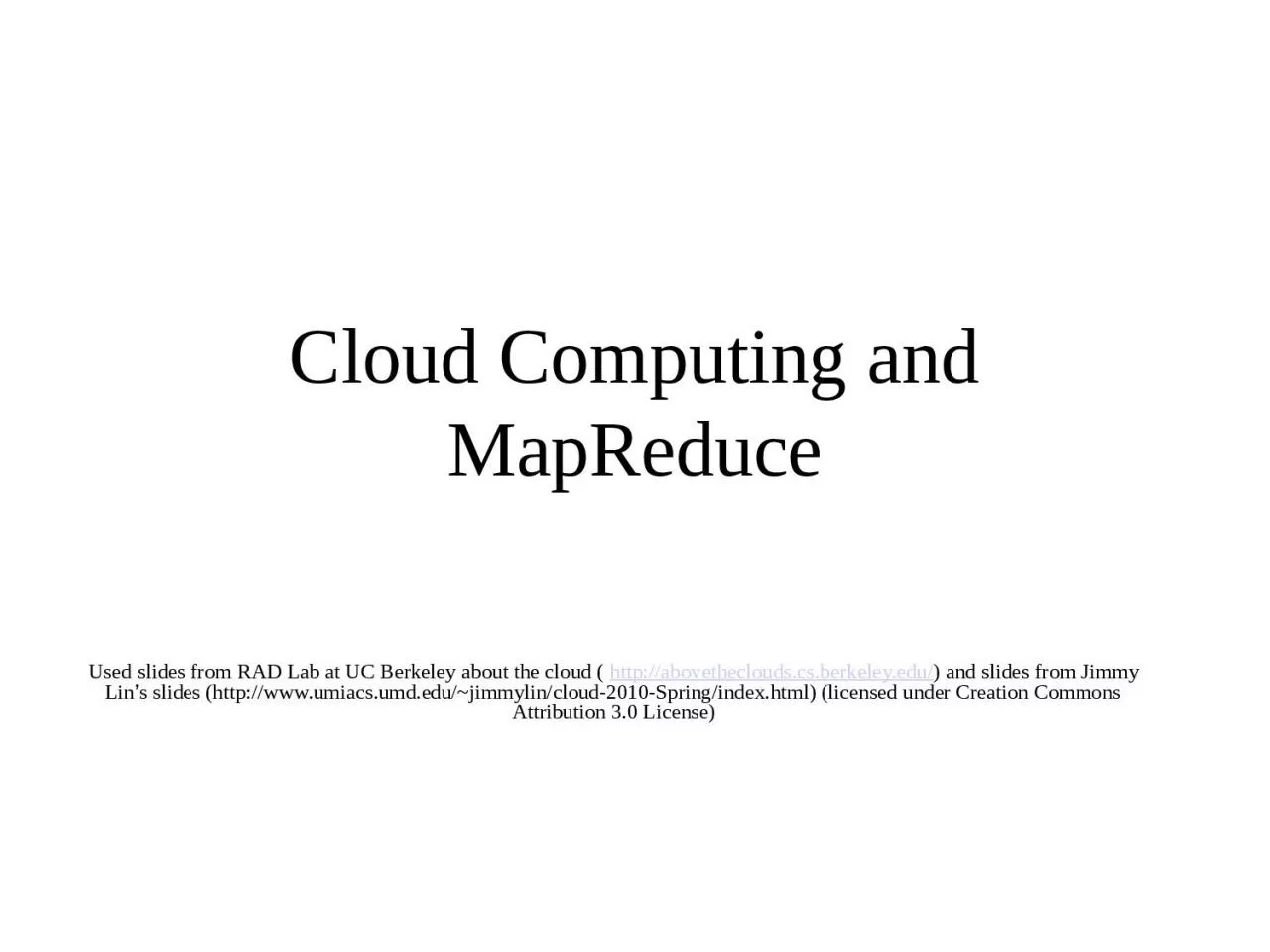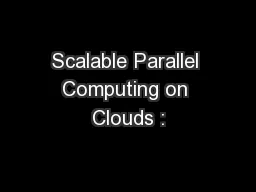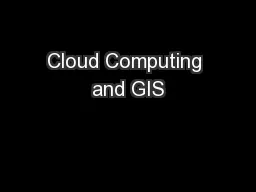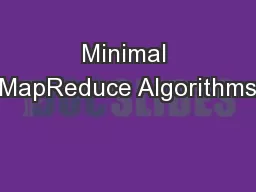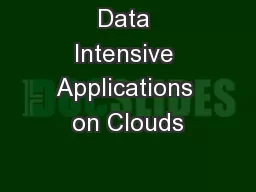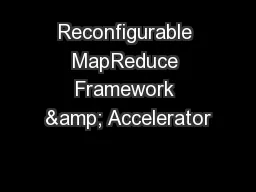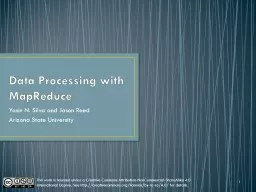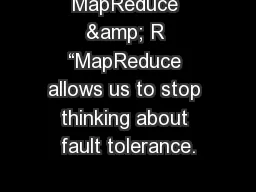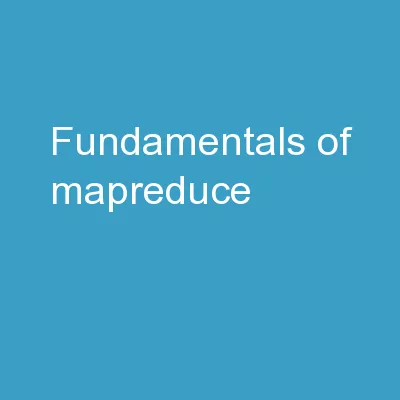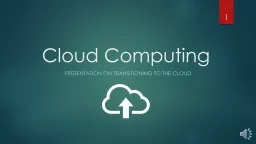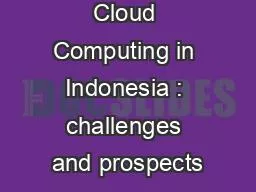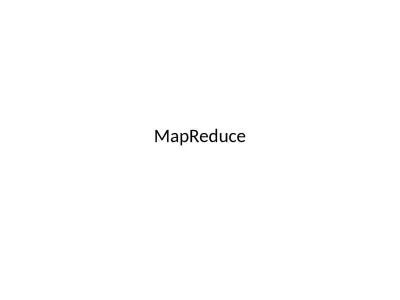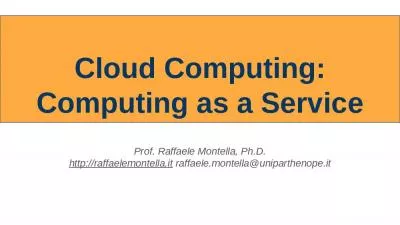PPT-Cloud Computing and MapReduce
Author : barbara | Published Date : 2023-06-23
Used slides from RAD Lab at UC Berkeley about the cloud httpabovethecloudscsberkeleyedu and slides from Jimmy Lin s slides httpwwwumiacsumdedujimmylincloud2010Springindexhtml
Presentation Embed Code
Download Presentation
Download Presentation The PPT/PDF document "Cloud Computing and MapReduce" is the property of its rightful owner. Permission is granted to download and print the materials on this website for personal, non-commercial use only, and to display it on your personal computer provided you do not modify the materials and that you retain all copyright notices contained in the materials. By downloading content from our website, you accept the terms of this agreement.
Cloud Computing and MapReduce: Transcript
Download Rules Of Document
"Cloud Computing and MapReduce"The content belongs to its owner. You may download and print it for personal use, without modification, and keep all copyright notices. By downloading, you agree to these terms.
Related Documents

